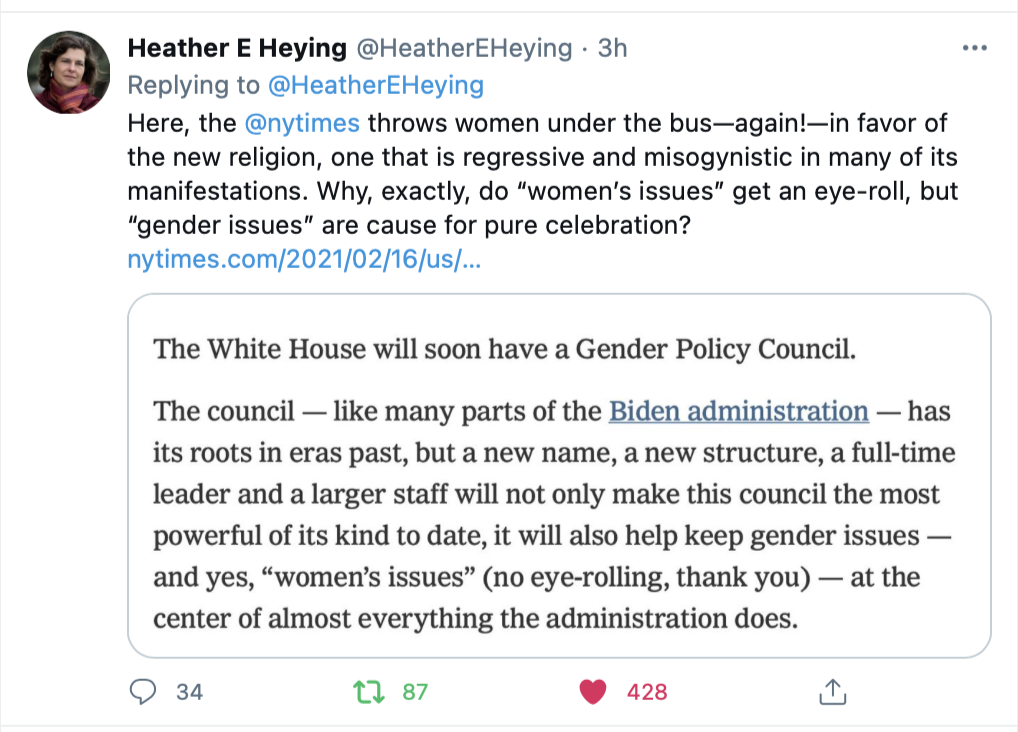Michelle Goldberg’s False Claim that Opponents of Critical Race Theory are Refusing to Debate
At the New York Times, Michelle Goldberg dishonestly proclaims the following:
But the right, for all its chest-beating about the value of entertaining dangerous notions, is rarely interested in debating the tenets of critical race theory. It wants to eradicate them from public institutions. “
Fallacy Number One occurs in Goldberg's first three words. Goldberg knows full well CRT's critics include a large diverse group of people that includes conservatives and moderates, but that is not all. Opponents of CRT also include enormous numbers of people who consider themselves to be liberal on numerous issues. These many liberals fiercely oppose the CRT centerpiece: "fighting racism" by simplistically classifying people by color. Goldberg and her favorite type of social justice warriors seem not to understand basic psychology and U.S. history. Classifying people by color is so incredibly off-the-mark, inefficient, hurtful and nationally dysfunctional that the U.S. fought an entire Civil War to end it, enacted a comprehensive set of civil rights laws to prosecute it and designated a National Holiday in honor of Martin Luther King in order to move forward with functional and kind-hearted ways to judge each other: by evaluating each others' content of character. The idea of moving past skin color as a way to judge each other was originally a liberal idea and this are now embraced by people across the entire political spectrum.
Fallacy Number Two. Goldbert states that "the right . . . is rarely interested in debating the tenets of critical race theory," citing to Christopher Rufo's statement: "“Critical race theory is a grave threat to the American way of life.” Goldberg's claim is that critics of Critical Race Theory refuse to debate this issue. She makes this claim despite the fact that Rufo has been vigorously debating CRT on Twitter for the past year. Further,
Rufo has also presented his views in the Wall Street Journal. But perhaps Goldberg was referring to another prominent critic of Critical Race Theory, Glenn Loury? If so,
A longer version of Loury's statement is here:
And is Goldberg consciously ignoring this invitation by Coleman Hughes to debate Ibram X. Kendi?
Or is Michelle Goldberg forgetting another (liberal) critic of CRT, John McWhorter who has shown that Ibram Kendi is incapable of honestly acknowledging McWhorter's precisely articulated critiques of Critical Race Theory?
If this is the kind of debate Goldberg seeks, bring on John McWhorter v. Ibram Kendi!
Goldberg is making her claim about the supposed refusal to debate while CRT's other rock star, Robin DiAngelo is busy grabbing exorbitant speaking fees for private events only. DiAngelo has avoided any and all debates regarding her defective and destructive ideas. In 2019, her speaking fees were $10,000-15,000. And see here. How do I know that she has refused to debate her ideas in a public forum? I invite you to run the following Google search: "robin diangelo debate." You will not find any evidence that DiAngelo has ever subjected her ideas to public real-time scrutiny.
[More . . . ]





